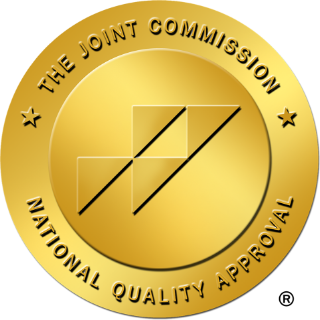
Many people imagine depression as something that looks like constant sadness, tears, and withdrawal from life. But depression can wear many masks. One of the most misunderstood forms is high-functioning depression. Individuals living with this condition often seem successful, upbeat, and put-together on the outside, while quietly battling significant internal struggles.
At Pacific Breeze Recovery, we believe that recognizing the signs of high-functioning depression is a crucial step toward healing. This guide explores what high-functioning depression really looks like, why it often goes unnoticed, and how to find the help you deserve.
What Is High Functioning Depression?
High-functioning depression isn’t a formal clinical diagnosis, but it commonly refers to individuals who live with persistent depressive symptoms while maintaining a seemingly normal daily life. Often associated with Persistent Depressive Disorder (PDD) or dysthymia, this condition involves a chronic low mood that lasts for two years or more.
While the symptoms may not be as acute as major depressive disorder, their prolonged nature can seriously affect a person’s emotional health, relationships, and quality of life. Those struggling may fulfill their obligations—holding down jobs, taking care of families, appearing social—but inside, they feel empty, overwhelmed, and emotionally disconnected.
Why High Functioning Depression Often Goes Undetected
The challenge with high-functioning depression is that it often flies under the radar. Friends, colleagues, and even healthcare providers might not recognize the signs because the person appears to be “doing fine.”
In fact, many individuals with high-functioning depression also struggle with perfectionism, people-pleasing tendencies, or fear of being perceived as weak. They may hide their symptoms out of shame, stigma, or a belief that they don’t deserve support because they haven’t “hit rock bottom.”
Sign #1: Constant Fatigue, Even After Rest
One of the most common signs of high-functioning depression is persistent fatigue. This isn’t just about being tired after a long day; it’s a deep exhaustion that lingers no matter how much sleep you get.
People with high-functioning depression often:
- Wake up feeling drained
- Struggle to get through the day without caffeine or stimulants
- Feel emotionally and physically depleted by everyday tasks
This ongoing tiredness is more than physical—it reflects the mental load of keeping up appearances and constantly battling internal negativity.
What It Means: Chronic fatigue in high-functioning depression is your body’s way of signaling emotional overload. It may suggest underlying issues with sleep quality, unresolved stress, or emotional burnout that needs to be addressed.
Sign #2: Loss of Joy or Interest in Activities
You might still go to work, hang out with friends, or engage in hobbies—but something feels off. The spark is gone. One hallmark of high-functioning depression is anhedonia, or the inability to feel pleasure in activities that once brought joy.
Examples include:
- Feeling emotionally numb during social events
- No longer looking forward to hobbies
- Going through the motions without real enthusiasm
What It Means: Losing interest in activities you once loved is a key indicator of depression. Even if you’re “functioning,” this sign reveals a deeper emotional struggle that deserves attention and care.
Sign #3: Negative Self-Talk and Perfectionism
People with high-functioning depression often have an inner critic that never quiets down. Despite external achievements, they may constantly feel “not good enough.”
This might sound like:
- “I should be doing more.”
- “I can’t mess this up or I’ll disappoint everyone.”
- “I don’t deserve to feel this way.”
Perfectionism and self-criticism are common coping mechanisms. They push people to overachieve in hopes of silencing their inner pain—but the relief never lasts.
What It Means: If your internal dialogue is harsh and unforgiving, it’s time to pause and reflect. Persistent self-criticism can be a sign of high-functioning depression and a major barrier to emotional well-being.
Sign #4: Difficulty Connecting with Others
Even when surrounded by loved ones, individuals with high-functioning depression often feel emotionally distant. They may isolate themselves emotionally while maintaining a social life outwardly.
This disconnect can look like:
- Feeling alone in a room full of people
- Avoiding deep conversations
- Faking smiles and laughter to blend in
What It Means: Emotional disconnection may be your mind’s way of protecting itself from vulnerability. But long-term disconnection can lead to loneliness, resentment, and worsened mental health.
Sign #5: Overachievement and Burnout Cycles
One of the most surprising signs of high-functioning depression is chronic overachievement. Many people cope with inner emptiness by pushing themselves harder at work or in other areas of life.
This may involve:
- Saying yes to every project
- Working late into the night to avoid being alone with your thoughts
- Seeking external validation through success
Eventually, the overachievement leads to exhaustion, followed by emotional burnout, guilt, and then another cycle of overcommitment.
What It Means: If your drive to succeed is rooted in avoiding emotional discomfort, it may be time to reevaluate. High-functioning depression can fuel harmful cycles that jeopardize your long-term mental and physical health.
The Hidden Impact of High-Functioning Depression
Because people with high-functioning depression tend to be productive, their mental health struggles are often minimized or dismissed—by others and themselves. But untreated depression can lead to:
- Relationship strain
- Decreased immune function
- Increased risk of substance use
- Heightened anxiety
- Suicidal ideation
The longer depression goes unacknowledged, the more entrenched and damaging it can become.
How to Cope with High Functioning Depression

Recognizing the signs of high-functioning depression is the first step. The next—and most crucial—step is reaching out for support. You don’t have to wait until you’re in crisis to begin your healing journey. Effective treatment is available, and recovery is possible with the right tools and compassionate care.
Here are key strategies to help manage high-functioning depression:
1. Therapy
Evidence-based therapies like Cognitive Behavioral Therapy (CBT), Dialectical Behavior Therapy (DBT), and trauma-informed approaches can help uncover the root causes of persistent sadness, numbness, or emotional exhaustion. These therapies teach individuals how to identify unhelpful thought patterns, regulate emotions, and build healthier coping mechanisms. At Pacific Breeze Recovery, our licensed therapists take an integrative and personalized approach, ensuring that each person receives the right combination of therapeutic support.
2. Medication
For some individuals, medication can be a critical component of managing high-functioning depression—especially when symptoms persist despite lifestyle changes or therapy alone.
At Pacific Breeze Recovery, we offer science-based Medication-Assisted Treatment (MAT) as part of our comprehensive approach to mental health and addiction recovery. MAT is particularly effective for clients facing co-occurring disorders, including depression and substance use. Our experienced team of addictionologists and mental health professionals customizes each treatment plan based on your unique medical history, the severity of symptoms, and the type of substances involved.
Medication-assisted treatment helps to:
- Rebalance brain chemistry
- Reduce overwhelming cravings
- Alleviate painful withdrawal symptoms
- Stabilize mood and cognitive function
- Support long-term emotional and physical recovery
Most importantly, MAT is never a standalone treatment. At Pacific Breeze Recovery, it is carefully integrated with behavioral therapies to address both the psychological and physiological aspects of depression and addiction. This combined approach helps foster long-term healing by empowering individuals to build emotional resilience and develop healthy life strategies—one day at a time.
3. Mindfulness & Self-Care
Creating space for intentional self-care is essential for mental health. Practices such as mindful meditation, breathwork, yoga, creative expression, and journaling can help manage overwhelming emotions, boost mental clarity, and reduce stress. Consistent routines—such as waking up at the same time each day, eating nourishing foods, and getting enough rest—can create structure and stability, helping you feel more in control of your day-to-day life.
4. Community Support
One of the most powerful antidotes to the loneliness of high-functioning depression is connection. Whether through peer support groups, therapy sessions, or recovery communities, talking to others who understand what you’re going through can help lift the emotional burden. Sharing your story and hearing others’ experiences fosters a sense of belonging and breaks the cycle of isolation and shame.
Take the First Step Toward Healing
If you or someone you care about is silently struggling with high-functioning depression, know that help is available—and recovery is possible. At Pacific Breeze Recovery in Huntington Beach, CA, our dedicated team offers personalized, holistic treatment plans designed to address both mental health and substance use challenges. Our approach combines MAT, evidence-based therapies, and compassionate care in a supportive and healing environment.
Contact us today to learn how we can help you or your loved one take the next step toward lasting emotional wellness and a brighter future.prioritizes your well-being.





